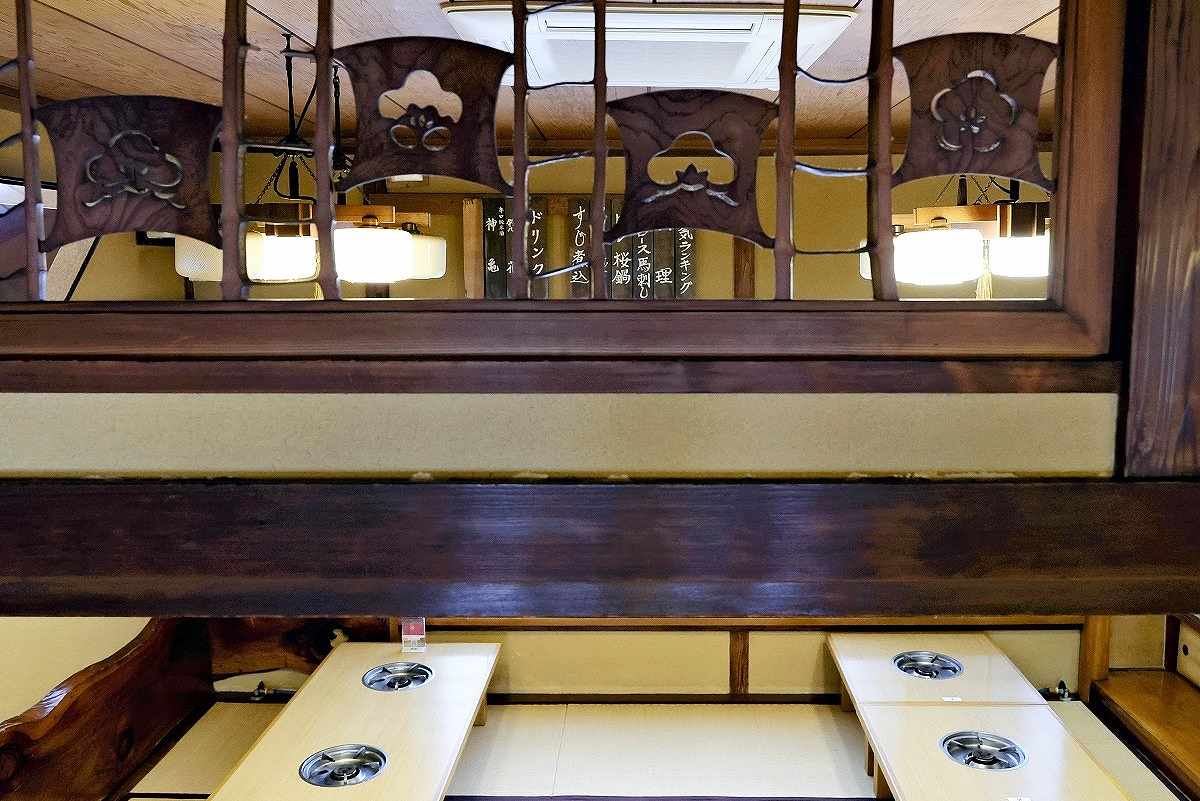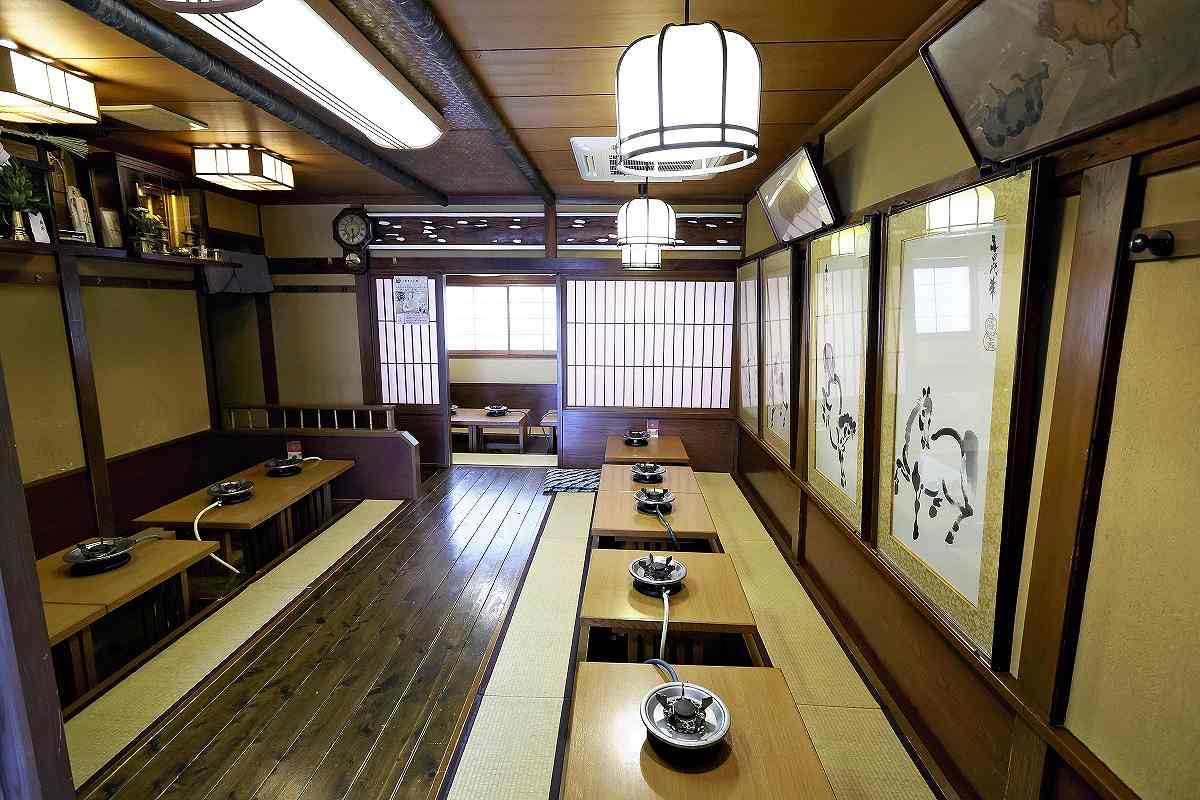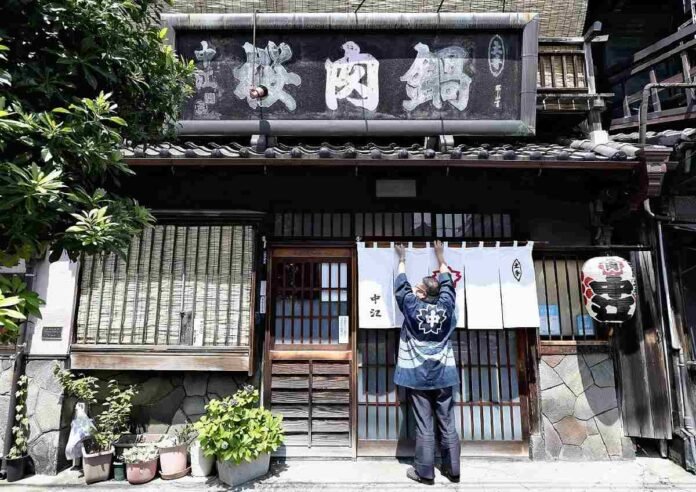The building that houses Sakura Nabe Nakae is a registered tangible cultural heritage of the country.
12:27 JST, August 26, 2024
Sakura Nabe Nakae, located in Taito Ward, Tokyo, is a 120-year-old restaurant that serves sakura nabe, that is, hotpot made with horse meat. Sakura nabe is a local dish that originated in Tokyo during the Meiji period (1868-1912) and spread throughout the Yoshiwara area, which was once a red-light district. During its heyday, there were more than 20 restaurants specializing in this dish. Sakura Nabe Nakae was one of them. Let’s taste a bit of history and take a bite of this dish that has been loved by the common people for so long.
Built in 1924, the spectacular two-story wooden restaurant is a nationally registered tangible cultural heritage. The large sign reading “Sakura Niku Nabe” (horse meat hotpot) catches your attention as you approach. Once you pass through the noren curtain at the entrance, you’ll think you’ve entered a museum, overwhelmed by the priceless items on display. These include a painting of a horse said to be the work of late Edo period painter Tani Buncho and calligraphy by literary master Saneatsu Mushanokoji.


Left: A unique mirror with patterns of pine, bamboo, plum and even cherry blossom Right: The interior of the restaurant is decorated with various valuable objects, including a painting said to be the work of Edo period artist Tani Buncho.
Sakura nabe came about after people tried to make something similar to gyunabe, a hotpot dish with beef stewed in sauce. The beef dish became popular in Yokohama as a delicacy that symbolized the opening of Japan.
According to Shiroshi Nakae, the fourth-generation owner of the restaurant, there is a theory that the phrase “bariki o tsukeru” (“building horsepower”) originated from people visiting Yoshiwara to eat sakura nabe.

The restaurant’s specialty, sakura nabe
In a shallow pan, the horse meat is first stewed in a sauce based on miso and broth with a strong soy sauce flavor. While the meat is still slightly red, the diner dips it in raw egg and eats it. The meat is tender and light, but full of flavor. Then, vegetables such as shimeji mushrooms, onions and Japanese mustard spinach are stewed in the sauce in the pan, which now has a touch of the umami flavor of the meat. “It is a taste that was born in Edo. The best of the ingredients are brought out and the meat can still be eaten quickly,” says Nakae.
In recent years, the number of foreign customers has increased. Nakae attributes this to the influence of the popular manga, “Demon Slayer: Kimetsu no Yaiba” — one of the storylines is set in Yoshiwara — and to a strong interest in Japanese culture among foreigners. To appeal to a wider range of customers, the restaurant has also developed a vegan version of sakura nabe, using a meat substitute made from soybeans.
“Enjoying horse meat as a piece of Japanese culture in a traditional building is a joy I want to pass on to the next 100 years,” Nakae said. His determination to preserve the long-standing restaurant was palpable.
***
Sakura Nabe Nakae

Address: 1-9-2 Nihonzutsumi, Taito Ward, Tokyo
Access: 11 minutes walk from Minowa Station on Tokyo Subway’s Hibiya Line
Note: Open from 17:00 to 22:00 on weekdays except Monday, from 11:30 to 14:00 and from 16:00 to 21:00 on weekends and public holidays. Closed on Mondays. (Closed on Tuesdays when Monday is a public holiday.)



